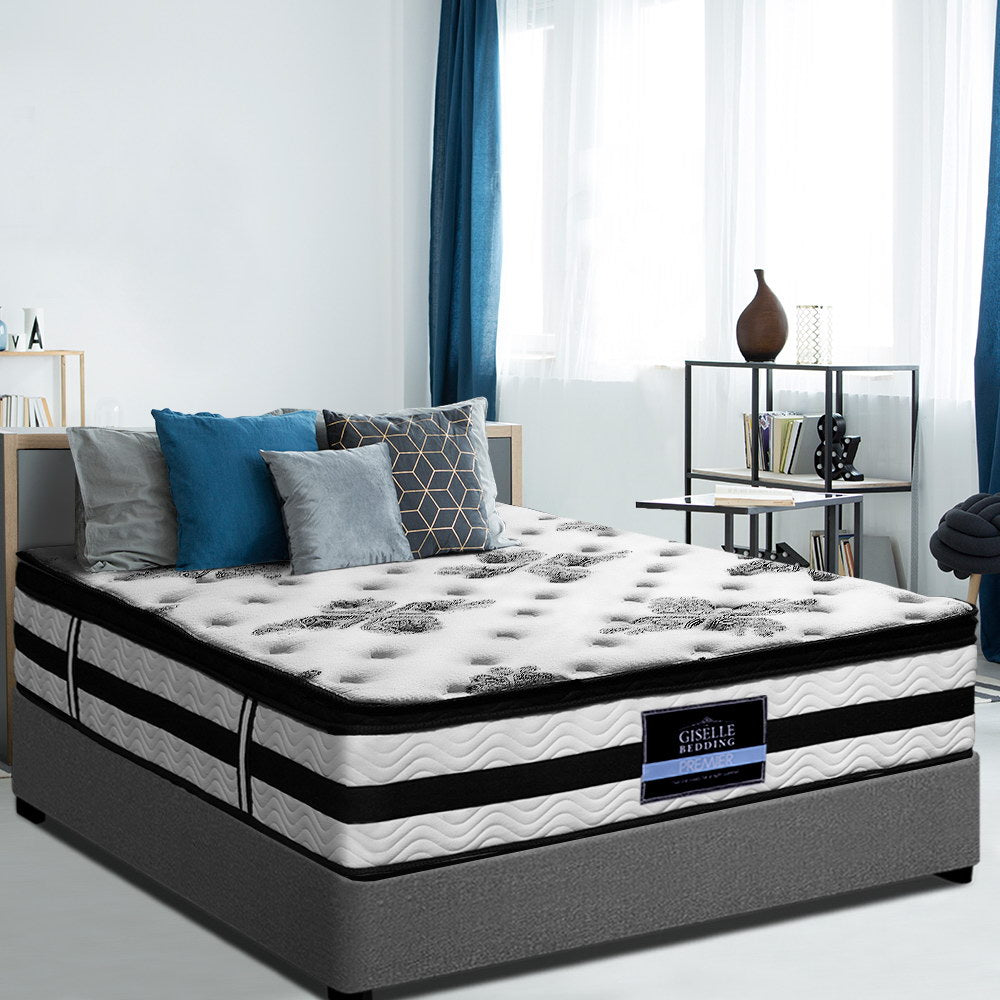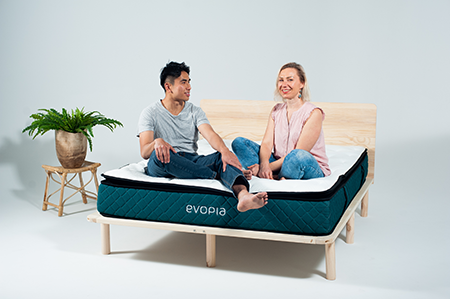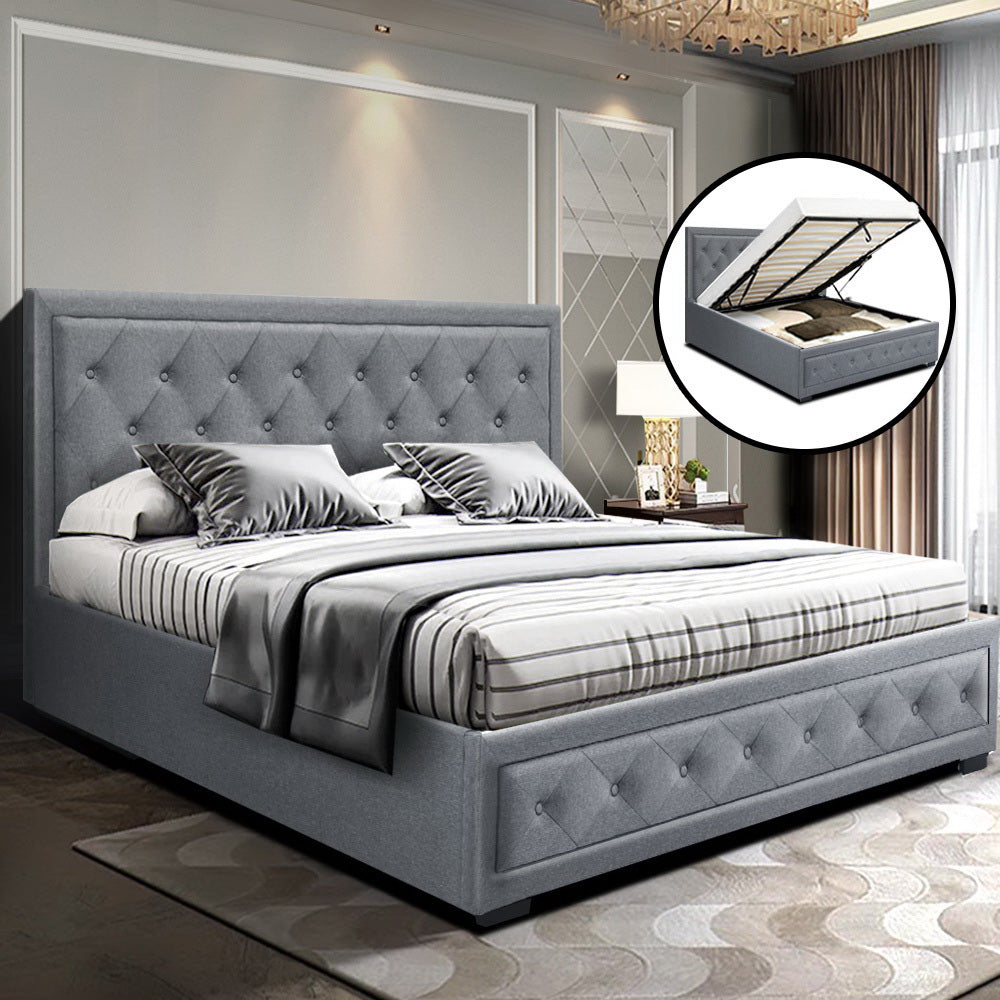What is the best Mattress for a heavier person?
Don’t know where to start in choosing a Mattress when you heavier than average?
People come in all shapes and sizes, heights and weights, so it makes sense that different people will need different things from a Mattress to get a comfortable nights sleep. What is soft to one person may be firm to another. From a Mattresses’ point of view, heavy is someone over 100kg regardless of whether they have a big frame, work out or are over their ideal weight.
Because a heavier body sinks further into a Mattress, a firm mattress will offer more resistance and support to someone with a heavier bodyweight. What is supportive and comfortable for a lighter person will seem soft and un-supportive to a heavier person. Conversely what is supportive and comfortable for a heavier person will seem too hard for a light person as they will not sink into the Mattress.
Here are some things to think about when choosing a Mattress:

The total thickness of the mattress
If you know the feeling of lying on an air bed that is deflated and you can feel the floor, this is bottoming out. A heavier body creates more pressure on the sleeping surface and needs deeper compression support to avoid bottoming out. A thicker Mattress has greater capacity to mould to your body shape and therefore provide even support for your body without reaching its maximum compression. The total thickness is the combined thickness of the core and the pillow-top or euro-top topper pad.
As a rule, the more weight the mattress needs to support, the thicker the mattress you should consider:
|
Thickness |
Bodyweight over 100kg |
|
15-20cm |
Poor |
|
20-25cm |
Fair |
|
25-30cm |
Good |
|
30-33cm |
Very good |
|
Over 33cm |
Excellent |
The construction of the mattress core
The construction of the core is also important to keep your spine aligned and prevent sagging in the middle. In-sufficient support in the middle can lead to a curved spine when sleeping on your side which can result in back pain. The core is the spring or foam structure of the mattress that forms it structure.
A traditional Bonnell Spring core is firm, strong and great for air flow. The springs are linked together which though very durable, is not so good at isolating movement, resulting in more partner disturbance.
The Pocket Spring mattress is a modern take on an innerspring mattress with independent coils that are great at isolating movement and minimising partner disturbance.
A Hybrid Mattress can have an innerspring core with a pillow-top or euro-top top layer in different degrees of firmness. This is a great combination of the strengths of an innerspring mattress with the features of high density foam.
Foam can be produced in a wide range of firmness levels from very soft to very firm. High density foam can provide excellent support while memory foam can mould to your body for very even support. Understanding what can cause or aggravate back pain in bed
One of the keys to managing back pain is maintaining the alignment of the spine during sleep.
Temperature Control
People with higher body weights tend to accumulate and retain more body heat. A mattress that dissipates heat helps keep the body cooler which is even more important when you share a bed with your partner.
A Mattress with good air flow and ventilation can help alleviate this. Innerspring core and hybrid mattresses tend to be better for air flow and ventilation.
Edge Support
A soft edge to a Mattress can give that rolling out of bed feeling and is not supportive for a heavier person to sit on. A strong robust edge will take more weight and will provide more resistance when lying close to the edge.
If you toss and turn and roll close to the edge, a soft edge can give way under your weight and break your sleep. A firm edge makes more of the surface area of your mattress useable which is important if you share your bed with a partner.
Mattresses with an Innerspring core and hybrid mattresses tend to provide better edge support than foam mattresses.
The firmness of the mattress
The firmness of a Mattress is measured on a scale of 1-10 with most models in the middle range of 5.0 to 6.5. A lighter person will sink less into the mattress so will need a softer model, whereas the heavier the person is, the firmer the mattress required to sink in the right amount to support the spine.
Choosing a pillowcould be also challenging. But if you a side sleeper buy pillow for head and neck support. Your spine maintains a straight horizontal line.
|
Body weight |
Ideal firmness range |
Comments |
|
<60kg |
Medium Soft 5.0 |
People under 60kg will not be comfortable on a firm mattress as they will not sink in to align their spine |
|
30kg – 100kg |
Medium 5.5-6.0 |
People between 60 and 100kg prefer a medium Mattress, not too soft or too firm |
|
100kg-120kg |
Firm 6.0-6.5 Ultra-Firm 7.0-9.0 |
People over 100kg will sink too far on a soft Mattress so a firm Mattress is a good choice |
A person with a bodyweight of 100-120kg may find a firmness of 6.0-7.0 firm enough. Once bodyweight is 130kg or greater a 7.0-9.0 should be considered.
The longevity of a Mattress
A Mattress typically gets used for 8 hours a day and around 2,600-2,900 hours per year. The more weight on a mattress the harder it is on the foam and the springs. All Mattresses will eventually compress and the more weight the shorter their life span. You should consider replacing your Mattress every 8 years and certainly every 10 years to maintain a healthy sleep.
A Final Word
Selecting a Mattress is a personal choice and descriptions of firmness and support tend to be based around people of average bodyweight. If you are a lighter or heavier person you need to interpret these in relation to your body weight and preferences.
The thickness of a Mattress, edge support, firmness and ventilation are key factors in deciding which mattress is for you. If you are 130kg or over you need to consider a firm to ultra-firm mattress for the right support.
If you are looking for a mattress for a heavier person you may check our collection of firmer mattresses








